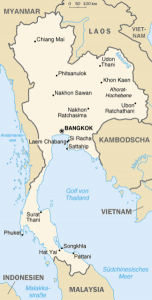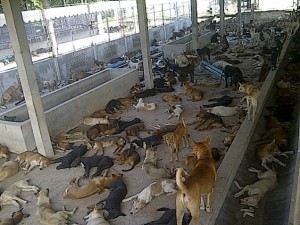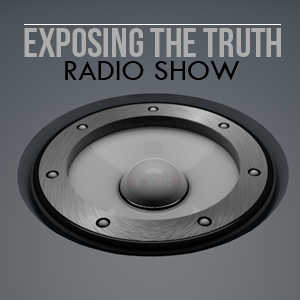Ampon Tangnoppakul was sentenced to 20 years in prison for computer crimes and lese majeste violations. While on the surface these seems like an extension of the Wall Street-London creeping Orwellian dystopia, it is in fact an ugly reaction to it.
Ampon was convicted of sending offensive messages to a government representative during a violent Wall Street-backed, pro-Thaksin Shinawatra rally in May of 2010. Ampon was arrested in August and just recently received his sentence, which may be pardoned as soon as next month. 
However, to understand the full scope of this, at first, seemingly unreasonable sentence for an allegedly sickly old man, a great deal about Thai politics must be understood – a back-story the disingenuous propagandists at the BBC, CNN, and throughout the US government funded propaganda fronts inside of Thailand, like Prachatai, depend on you not knowing.
A Background
The 2010 Thai Protests: The particular rally Ampon was attending in May of 2010 when he sent his SMSs, began a month earlier. It was an attempt by Wall Street and London corporate fascist interests to reinstall their ousted proxy Thaksin Shinawatra. In mid April, after days of trying to goad Thai security forces into a violent crackdown on Thaksin’s red shirts, protest leaders literally called on their own rank and file to donate blood to be spilled on key government buildings throughout Thailand’s capital of Bangkok. This grisly display would foreshadow protest leaders’ plans, unbeknown to even their own followers. On April 10, 2010, after the Thai military shut down Thaksin’s nationwide propaganda network, protest leaders brought 200 men to the gates of Bangkok’s 1st Army Region base and tried to storm the facility. The leaders must have realized that storming a military facility had a universally high probability of provoking the use of deadly force. The Thai military however, dispersed the protesters with water cannons and rubber bullets.
The protesters were entirely unaware of the gambit, while security guards amongst the protesters appear to have been given compartmentalized orders to keep the protesters kettled in before the attack came. It is unlikely that even the security guards knew the attack was coming, as many immediately rushed in to protect fallen soldiers from aggressive protesters, while gun battles continued elsewhere. There were also most likely members of the militant group amongst the protesters directing fire toward Colonel Romklao and his command unit, as laser markers were seen fixated on the soldiers right before the incoming sniper fire hit.
It was quite clear a highly trained, well-prepared third party was involved and both foreign and domestic, amateur and professional footage caught the melee on tape. Initial blanket denials by protest leaders quickly became piecemeal confessions as footage of these “men in black” filtered out.
International spokesman for the protesters, Sean Boonpracong, told Reuters elements of the army were with their movement, including the black-clad mystery gunmen that took part in the April 10 bloodbath. He stated, “They are a secret unit within the army that disagrees with what’s going on. Without them, the black clad men, there would have been a whole lot more deaths and injuries.” The suspected leader of these gunmen, renegade general Khattiya Sawasdipol, known as “Seh Daeng,” further damned earlier denials by admitting to commanding 300 armed men trained for ”close encounters” and carrying M79 grenade launchers, before withdrawing his comment in later interviews.
From April 10, until the widespread arson that marked the end of the protests on May 19, daily and nightly gun battles, grenade attacks, and sniper fire would claim the lives of 91 people. This included 9 soldiers and police, a woman killed by a protester M79 grenade attack, and at least one protester who died of smoke inhalation while looting a building fellow protesters lit ablaze. The remaining 80 deaths included journalists, bystanders, medical workers, and protesters caught in crossfire. While Thaksin’s supporters to this day attempt to portray these events as a massacre of “91 protesters,” it is quite clear that the military was up against an armed wing working amongst the protesters, admitted by members of the protest leadership themselves.
Thaksin’s Wall Street Ties
Thaksin, Thailand’s prime minister from 2001 until a military coup removed him in 2006, was a former Carlyle Group adviser and was literally reporting to the globalist Council on Foreign Relationsin New York City on the eve of his ousting from power. While in office, Thaksin oversaw a brutal 3-month “war on drugs” that saw 2,500+ extra-legally executed in the streets. Thaksin also attempted to ramrod through a US-Thailand Free-Trade Agreement (FTA) without parliamentary approval, a 2004 FTA backed by the exact same US-ASEAN Business Council recently visited by his “red shirt” movement or United Front for Democracy Against Dictatorship (UDD) leaders in April of 2011.
The business council in 2004 included 3M, war profiteering Bechtel, Boeing, Cargill, Citigroup, General Electric, IBM, the notorious Monsanto, and currently also includes the criminal banksters of Goldman Sachs and JP Morgan, Lockheed Martin, Raytheon, Chevron, Exxon, BP, Glaxo Smith Kline, Merck, Northrop Grumman, Monsanto’s GMO doppelganger Syngenta, and Phillip Morris. Admittedly, these corporations are more synonymous with mass murder, mass corruption, corporate fascism, crony-capitalism, warmongering, lies, deceit and all the other ugly aspects that truly define “globalization,” than they are with any tenant of “liberal democracy.”
Since the 2006 coup that toppled his autocratic regime, Thaksin has been represented by US corporate-financier elites via their lobbying firms including, Kenneth Adelman of the Edelman PR firm (Freedom House, International Crisis Group, PNAC), James Baker of Baker Botts (CFR),Robert Blackwill of Barbour Griffith & Rogers (CFR), Kobre & Kim, and currently Robert Amsterdamof Amsterdam & Peroff (Chatham House). Meanwhile, his “red shirts” UDD street mobs have received rhetorical support by US-funded NGOs like Prachatai which has recently been exposed as almost exclusively funded by the US government through the National Endowment for Democracy, USAID, George Soros’ Open Society Institute, and a myriad of other globalist foundations.
Quite obviously, the UDD, Thaksin, and Prachatai, all now confirmed to be consorting with, funded, and supported by the US government via its subversive National Endowment for Democracy and the Fortune 500 corporate-fascists that direct them, are most certainly not pursing “democracy” and “freedom.”
Enter Ampon & His Hand-Wringers
It is amidst this background, at the height of a foreign-backed, violent insurrection in 2010, that Ampon sent his SMS messages to the personal secretary of then prime minister Abhisit Vejjajiva. During this rally, and rallies before it, it was common practice for Thaksin’s cheerleaders on stage to encourage acts of violence against soldiers and members of the ruling government. Abhisit’s car, a year earlier, came under attack by Thaksin’s mobs, a move that would have seen scores if not hundreds of protesters mowed down had such an attack happened in a Western nation.
Despite claims by the Wall Street-London press that Thailand is ruled by a despotic, brutal military regime - an attack on the nation’s prime minister’s car in 2009 left only his guards slightly injured. Had such an attack been aimed at the leader of a Western capital, it is likely not only would these protesters have been gunned down, but the entire protest swept from the streets in a single day. 2009′s Wall Street-backed protests in Bangkok claimed only two lives, both gunned down by pro-Thaksin rioters while trying to protect their property from looting.
Quite clearly Ampon’s case and the movement he chose to participate in has nothing to do with “human rights,” “democracy,” or “freedom.” It is seditious and above all, violent in nature. While Ampon himself may be just one of many thousands of dupes worldwide drawn into Wall Street’s insidious creep throughout the world, the movement he belongs to is one of exact purpose and poses a direct threat to the sovereignty, security, and future of Thailand.
Ampon’s worth, and the value of his imprisonment to the Western corporate-media and its fully-funded and backed proxies both abroad and within Thailand, especially Prachatai, is his ability to give rhetorical leverage to their otherwise illegitimate political agenda of dividing Thailand, undermining its 800-year-old institutions and implementing Wall Street and London “reforms.”
One of the many flaws in trying treasonous behavior within Thailand’s current legal system is that many comments filed as “lese majeste” are not made public. This means that Ampon could have theoretically said anything, including making threats of physical violence, a crime punishable in even the most tolerable societies.
The disingenuous “hand-wringers” exploiting Ampon’s case fail to acknowledge this lack of information, or even focus on such a lack of information as one of many flaws within Thailand’s legal system as the crux of the issue, and are instead using the opportunity to defame and undermine Thailand’s ancient institution. By doing so, they raise the political capital on both sides so high that Ampon, if he is indeed “innocent” as the hand-wringers baselessly claim, stands in the middle of their political escalation which will prevent parties on both sides of Thailand’s power struggle from backing down and letting reason prevail.
In other words, Ampon’s hand-wringing supporters and their political exploitation of his case are as much an enemy to him and his receiving justice as they claim are the people who have imprisoned him. Besides Prachatai, a fully compromised propaganda outfit exclusively funded by the US State Department, we have BBC “weighing in” disingenuously on the subject.
BBC’s article, “Thailand lese majeste man jailed for 20 years,” also fails to provide any facts behind the case and attempts instead to illustrate the draconian and unjust nature of Thailand’s laws. BBC vaguely mentions “Thai academics and writers” who have “fled the country for fear of being denounced,” but fails to mention all of these characters, including most predominantly Giles “Jai” Ungpakorn and Jakrapob Penkair are all leading members of Wall Street-stooge Thaksin Shinwatra’s “people’s revolution.” Both men have also called on Thaksin’s supporters to take up arms and fight a “People’s War.” BBC further exploits the ignorance of its readers when they refer to Prachatai as a “liberal news website” failing to mention its overt ties to and immense funding from the US State Department.
It’s Not about Freedom of Speech
While Jeffersonian ideals of human freedom are universally attractive – the fact remains that there isan insidious, global network attempting to exploit and pervert these noble ideals to mislead well-meaning individuals into perpetuating its self-serving autocratic, and ultimately human-enslaving agenda. Thailand may learn some lessons from neighboring Malaysia who has dealt with an identical Wall Street-backed fake-democracy and human rights movement, Bersih, who charges its members openly with sedition against the state and educates the population of the dangers of Wall Street and its creeping network of fraudulent NGOs.
Thailand can also learn a lesson from Belarus who recently skipped past “useful idiots” like Ampon who may have been in the wrong place, at the wrong time, hopped up on misinformation, and went straight for Wall Street’s regional sedition ring-leader – charging him with tax evasion and sentencing him to 4 years in prison.
Likewise, Thailand has many candidates who should be prosecuted as part of a more appropriate response to Wall Street’s creep, including Chiranuch “Jiew” Premchaiporn of Prachatai who has made a career out of taking foreign money, misleading her readers and apparently even her own associates, to help perpetuate Wall Street’s agenda throughout Southeast Asia and beyond. Thaksin’s chief propagandist, Samyos Phruksakasemsuk, author of “Voice of Taksin” is already on trial facing “lese majeste” charges, of which he is surely guilty of. However, it is the violent, foreign-funded rhetoric he ceaselessly promoted which served as the blueprints for very real violence that claimed over a 100 lives between 2009 and 2010 that constitutes his most egregious crime. Somyos, also portrayed as a “political prisoner” by the same hand-wringers now exploiting Ampon’s case, cried “fire” in the proverbial theater and got people killed, property destroyed, and lives ruined - decidedly behavior not protected under any “bill of rights.” (Samples of Somyos’ work can be found under #3 here. A full archive of Thaksin’s propaganda can be found here.)
Ampon’s “20 years for sending SMSs” now appears to be part of something much larger when one takes a look behind the curtain. Warning signs should immediately go up when the BBC is howling in tandem with other corporate-media outlets over “human rights” abuses, especially after these same disingenuous concerns were used by these same voices to justify mass murder in Libya, the bodies of which are still warm in their mass graves. Ampon’s case in the court of public opinion has revolved around weepy narratives concerning his age, health, and his separation from his family, not the nature or details of his crime or the foreign-funded seditious and violent movement he willfully chose to be a part of.
Ampon may or may not be the victim of a miscarriage of justice - we will never know. Those who sent him to jail have already proven they see him as a threat, and those “defending” him have already proven they see him and his “victimization” as merely an opportunistic means to advance their own political agenda.
Image: “Bozo Journalism.” Former Reuters senior editor and now freelance propagandist, Andrew Marshall, makes a hamfisted attempt to channel the “Arab Spring” -an admittedly contrived, premeditated Wall Street-London backed regional destabilization. As mentioned before, the “Arab Spring’s” final destination is Moscow and Beijing, making Thailand one of its necessary “stops” along the way.
And while these imposter-humanitarians clamor with tacky “Arab Spring” slogans like, “We are all Ampon Tangnoppakul” and insist “revolution” is just around the corner, it should be noted, as always, that no real revolution of any kind will take place until people both understand the balance of power currently held in the world today and how to change it pragmatically rather than politically. Wall Street will remain intact until we see them, not local governments or dupes, as the real enemy, and the systematic boycotting and replacing of their degenerate, global domineering system implemented in full as the solution.
Source:
http://www.activistpost.com/2011/11/exposing-wall-streets-human-rights.html




 sending...
sending...
